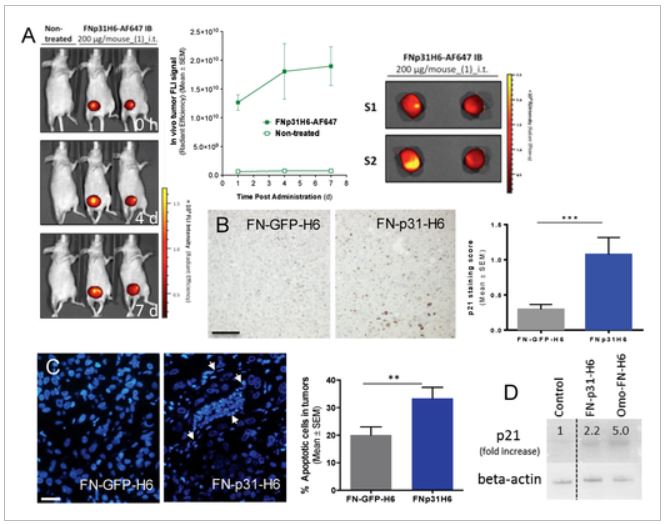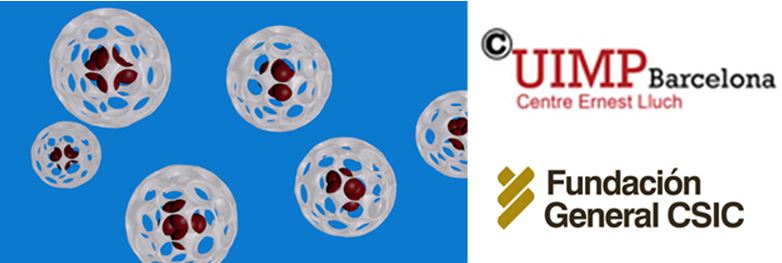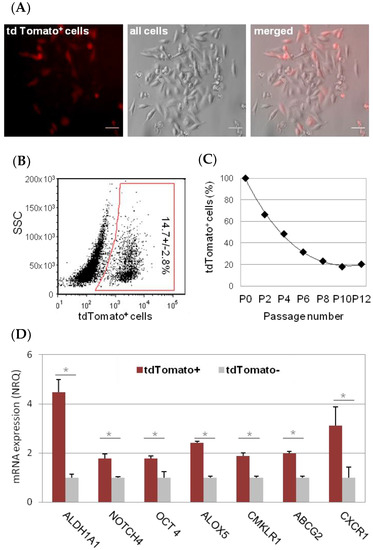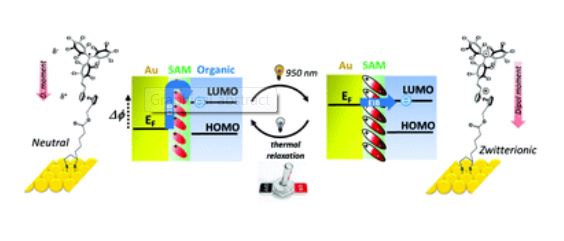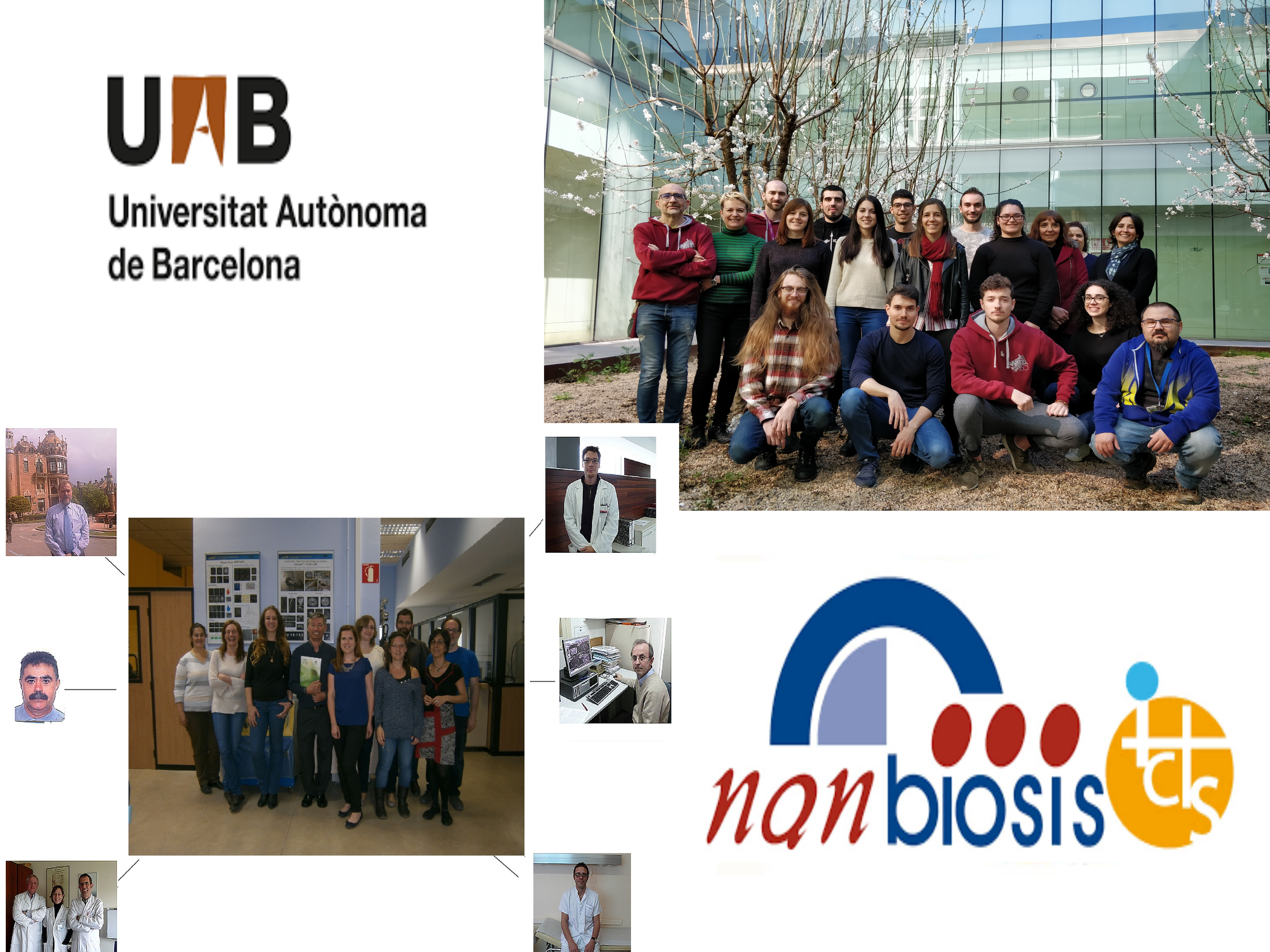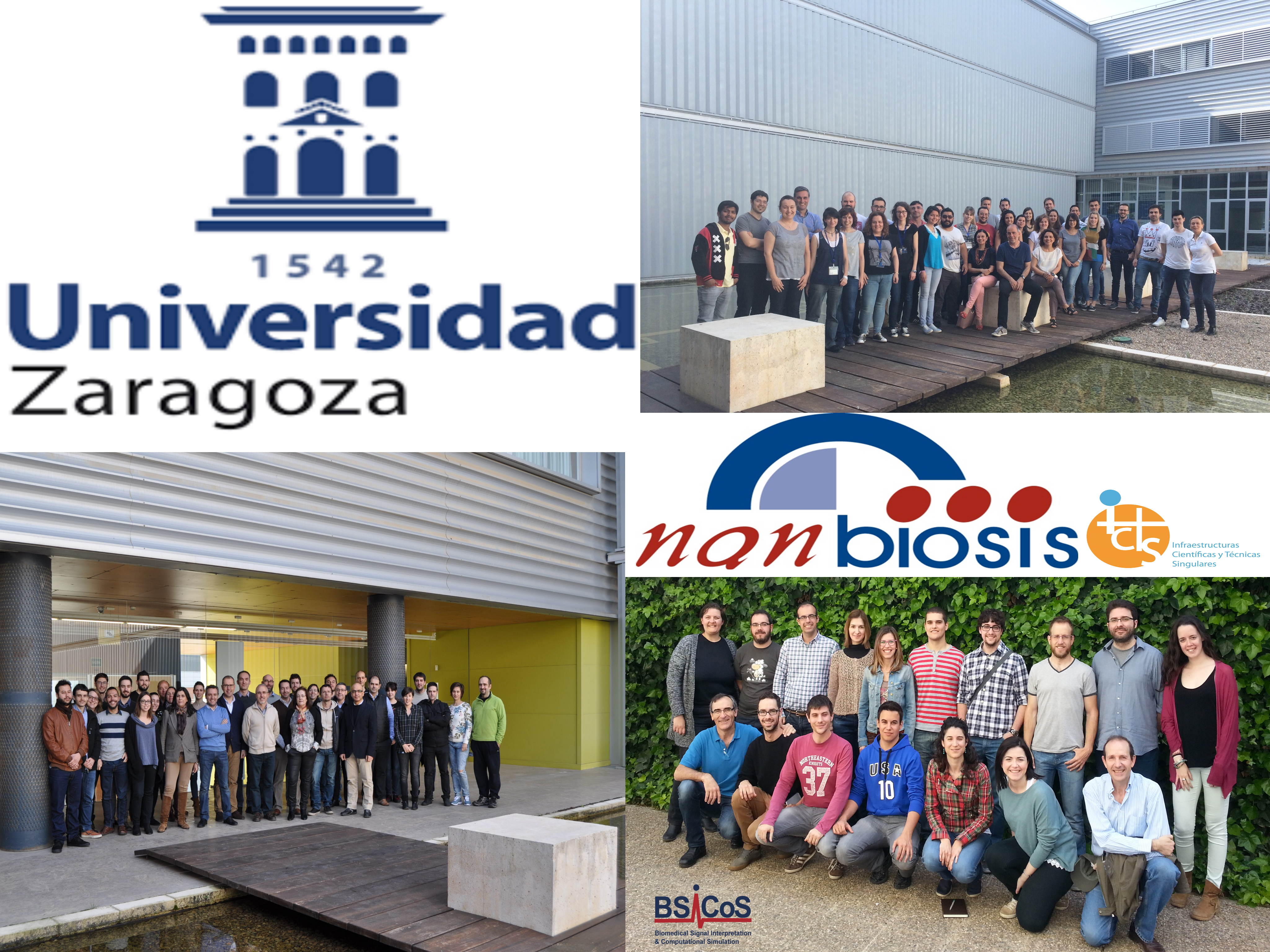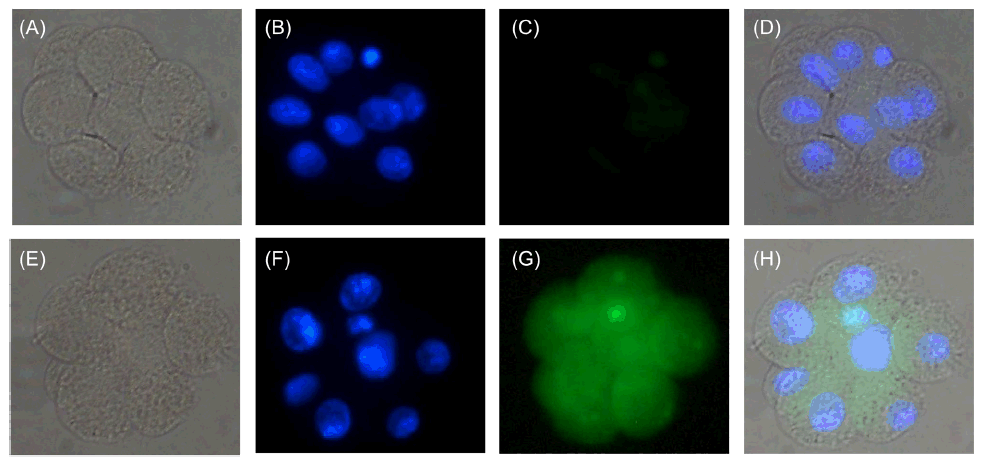Targeting antitumoral proteins to breast cancer by local administration of functional inclusion bodies
Three units of NANBIOSIS have collaborated in obtaining the research results published in the article “Targeting Antitumoral Proteins to Breast Cancer by Local Administration of Functional Inclusion Bodies” published by Advanced Science
Protein production and DLS have been partially performed by the Unit 1 of ICTS NANBIOSIS Protein Production Platform (PPP) and the Unit 6 NANBIOBIS Biomaterial Processing and Nanostructuring Unit. Biodistribution and immunohistochemistry assays were performed at NANBIOSIS U20 In Vivo Experimental Platform/FVPR
Two structurally and functionally unrelated proteins, namely Omomyc and p31, are engineered as CD44‐targeted inclusion bodies produced in recombinant bacteria. In this unusual particulate form, both types of protein materials selectively penetrate and kill CD44+ tumor cells in culture, and upon local administration, promote destruction of tumoral tissue in orthotropic mouse models of human breast cancer. These findings support the concept of bacterial inclusion bodies as versatile protein materials suitable for application in chronic diseases that, like cancer, can benefit from a local slow release of therapeutic proteins.
